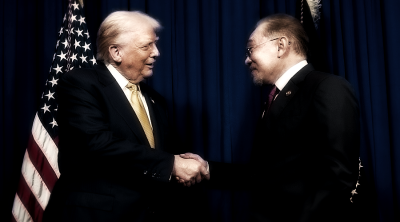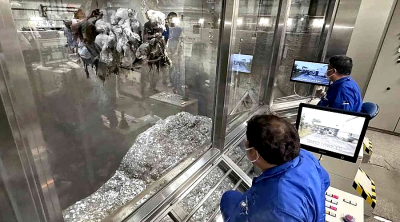
Since the first Trump administration, the intensification of the US-China conflict has led to the transfer of production from China to the Association of Southeast Asian Nations (ASEAN), and ASEAN has been expected to play a central role in the “China Plus One” strategy.
At first glance, this production transfer seems to have given ASEAN an opportunity to “fisherman’s gain” by expanding inward direct investment and exports.
However, the benefits are inextricably linked to criticism in the US market that it is actually a circumvention export hub.
In fact, an analysis of trade statistics from the International Monetary Fund (IMF) confirmed a positive correlation between Chinese exports to ASEAN and ASEAN exports to the US.
In Vietnam and Malaysia, in particular, the tendency for the same items to be exported to the US as “made in ASEAN” is evident immediately after an increase in intermediate goods imports from China.
This reflects a structure in which Chinese-made parts are re-exported to the US after undergoing final processing in the ASEAN region.
This is one reason why US authorities suspect export circumvention.
The question of whether there is a “change of origin” with substance, rather than a mere geographical transfer, is now under intense scrutiny by US authorities.
In April 2025, the Trump administration imposed “reciprocal tariffs” of up to 50 percent on nearly all imports worldwide. This was due to heightened vigilance regarding Chinese products entering the United States via ASEAN.
There have been several cases in Vietnam, Thailand, and Malaysia where Chinese companies shipped products under the names of local subsidiaries, raising suspicions of “origin falsification” in the United States.
US trade authorities have been strictly monitoring and cracking down on such transactions.
The United States’ concern is not the place of shipment, but whether a “substantial change” has been made to the imported materials.
Based on its “Non-preferential Rules of Origin,” the United States recognizes a country as the product’s country of origin only if it undergoes significant processing that “changes its name, character, or use.”
Mere assembly and packaging are considered “origin = China” (circumvention export) and are subject to additional tariffs. This differs from the Rules of Origin adopted by ASEAN countries under free trade agreements (FTAs), and the United States’ legal system and interpretation are unique.
This “inconsistency of rules” poses the greatest risk to ASEAN companies and governments.
Even if production actually takes place locally, additional tariffs cannot be avoided if the US side determines that there is “no substantial change” in the country of origin, which is China.
Furthermore, the US holds importers to a standard of “reasonable care” and imposes fines and criminal liability if they cannot accurately explain the manufacturing process or where the parts are sourced.
Therefore, it is urgent for ASEAN companies to build an advanced compliance system that aligns with the US trade system.
In response to the US government’s growing interest in export circumvention, the Thai government announced in April 2025 that it would review the operation of the Certificate of Origin system.
To strengthen its response, Thailand has introduced a unified system of factory inspections and certificate issuance for 65 high-risk items.
Other ASEAN countries also need to make their systems more transparent and strengthen their operational capabilities.
What is needed for ASEAN to shed its “circumvention hub” stigma and become a reliable export region?
First, the transparency and recordability of the manufacturing process must improve. Without a traceability system, products will not withstand inspection by US Customs, and the risk will be shared by suppliers.
Second, the US Advance Ruling System must be used actively. This system confirms the country of origin of individual products in advance, which prevents future problems.
Furthermore, using the US Customs database (Customs Rulings Online Search System, CROSS) allows for more accurate risk assessments by referring to past case studies.
Third, international harmonization and coordination of the Certificate of Origin system is required.
ASEAN is already working to increase the transparency of intra-regional trade through measures such as the electronic Certificate of Origin (e-Form D).
Going forward, however, ASEAN should advance institutional dialogue toward creating a reliable certification system that includes the United States (e.g., the Trusted Exporter Framework).
In order for ASEAN to be recognized as a manufacturing base with its own unique reliability and transparency, while maintaining economic ties with China, institutional measures alone are no longer sufficient.
Three issues must be addressed: developing corporate-level systems, ensuring the reliability of government certification systems, and understanding and adapting to US trade regulations.
ASEAN has benefited from the “China Plus One” strategy, but the question now is whether it can truly be recognized as “plus one.”
Ultimately, it is the trade governance and compliance capabilities of each country that will determine the outcome.
(Seiya Sukegawa is Professor at the Faculty of Political Science and Economics, Kokushikan University, Japan, and Visiting Professor, Thai-Nichi Institute of Technology, Thailand.)
ADVERTISEMENT
ADVERTISEMENT








































